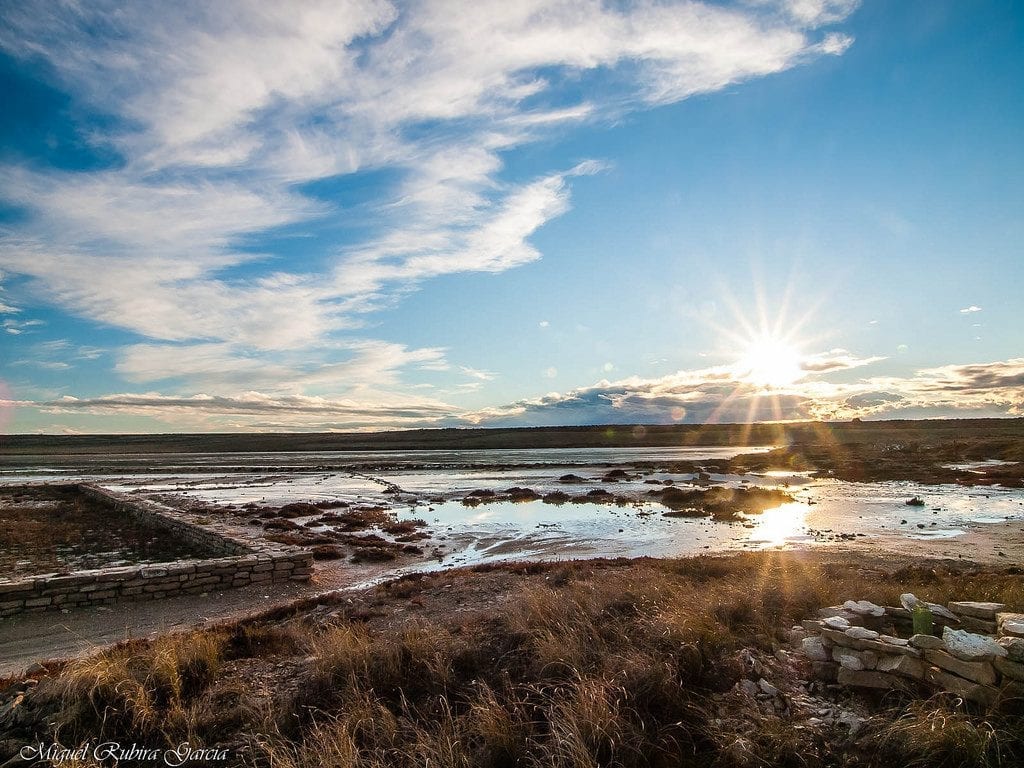
As we well know, the temperature when we get up is not the same as that recorded at noon, when the star king is high in the sky. This numerical difference between the minimum and maximum values observed during a given period of time is called thermal amplitude, and is used in the investigation of the atmosphere and the ocean of a certain geographical area, in addition to serving for farmers and gardeners.
They are therefore very important values, since thanks to their study we can know more details about the different climates.
What parameters affect the thermal amplitude?

The value of the thermal amplitude, also known as thermal oscillation, depends on the following factors:
Mar
As it has a higher heat capacity and heat conductivity, causes a decrease in the daily and annual temperature range. While the earth's crust cools and heats up rapidly, the sea does so at a slower rate, so in coastal areas there is not a great difference between maximum and minimum temperatures, which is the case in inland areas.
Topography
Regarding topography, on the slopes of the mountains the thermal oscillation is less than on the plains, since they are areas that are much less exposed to inclement weather.
Cloudiness
The greater the cloudiness, the smaller the amplitude will be since the clouds cover the sun, preventing its rays from reaching Earth.
Latitude
The closer you are to the poles and the equator, the lower the thermal amplitude. On the contrary, if you are in a region that has a temperate climate, the maximum temperature and the minimum temperature can be very different. (We will get back to this point later).
What is the variation of the diurnal temperature?
Is the variation in temperature that occurs between the hottest time of day and the coldest at night. Variations in daytime temperature can be very large on the surface of the earth, such as in deserts, where 38ºC or more are recorded during the day and at night they drop to a cold 5ºC.
El temperature range is an important factor in the variation of the daytime temperature, and is that when solar energy reaches the surface in the morning, a light layer, between 1 and 3 cm, of air that is just above the ground is heated by conduction . The heat exchange between this thin layer of warm air and the cooler air above it is inefficient, so much so that on a summer day temperatures could vary by 30ºC from just above ground to waist level. The solar radiation that can enter in summer is higher than the heat that is already inside the planet in that particular region, and the situation does not balance out until the afternoon.
What is the temperature range in ...?

Map of thermal amplitudes of Spain
As we mentioned, the study of thermal amplitude is extremely important for science, but also for other fields such as agriculture or gardening. Not only is it interesting to know more details about the different climates, but thanks to this it will be much easier for us to grow some plants or others, since certain species grow in each climate. So that, Let's see what thermal amplitude there is according to the climate:
- Equatorial climate: temperatures are high throughout the year. The average temperature is above 18ºC, and can reach between 20 and 27ºC. But what is most striking is the little difference between the coldest month and the warmest month: 3ºC or less.
- Tropical climate: Temperatures stay high all year long, so it's a climate without winter. The average temperature of the coldest month is above 18ºC, and the thermal oscillation can reach 10ºC.
- Mediterranean climate: temperatures remain mild practically all year round, except in summer when they are very high and can reach 45ºC. The average annual temperature is about 14ºC, with a temperature range of between 5ºC and 18ºC between the coldest month and the warmest month.
- Continental weather: temperatures are very low in winter, and very high in summer. The average temperature can be as low as -16ºC. The thermal amplitude is very large, over 30ºC.
- High mountain climate: in the mountains the temperature decreases with the altitude, but even so we can say that the temperatures in winter are low, being able to reach -20ºC, and those in summer are mild. Thus, the thermal oscillation is less than 20ºC.
- Polar climate: temperatures are always low or very low. Winter lasts eight or nine months, and during the few weeks that summer lasts, it barely exceeds 0ºC. With a minimum that can be -50ºC, the polar thermal amplitude is enormous, over 50ºC.
And with this we are done. I hope you have learned more about thermal amplitude 🙂.